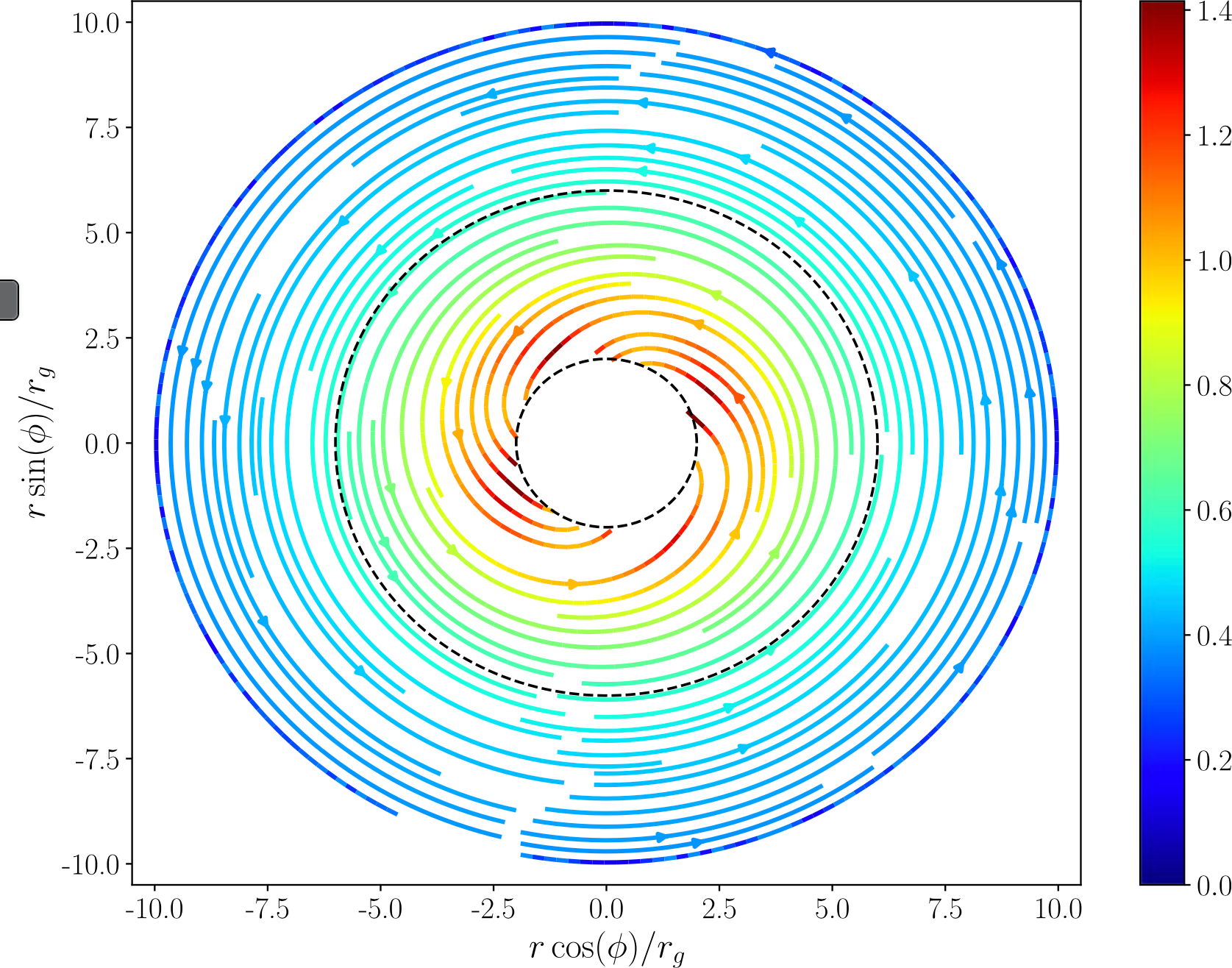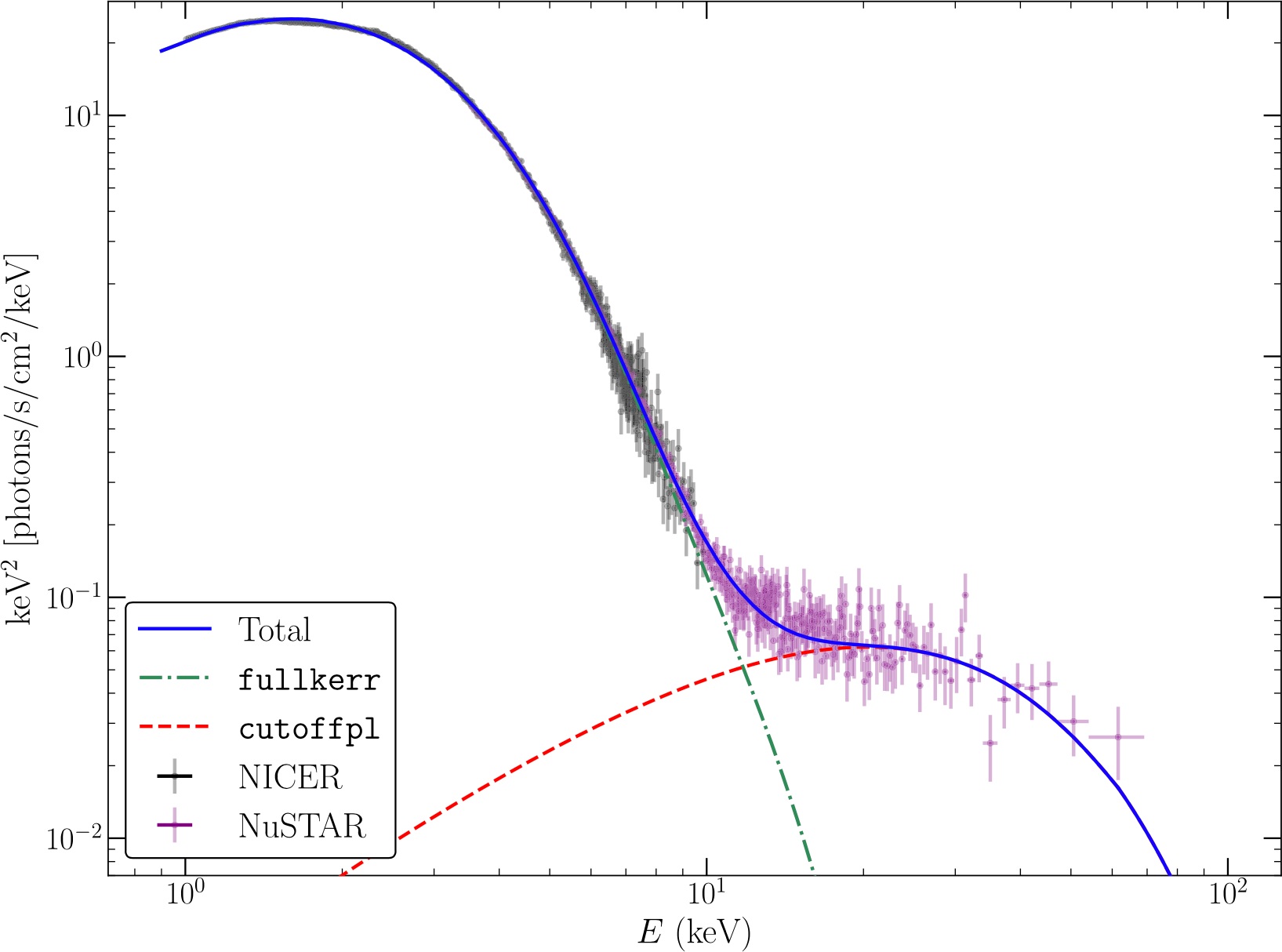NICER / ISS Science Nugget
for May 30, 2024
Taking the plunge
The fluid swirling around a black hole, heated by turbulence and from energy gained by falling into a deep gravitational well, reaches temperatures high enough - millions of degrees Kelvin - that its thermal glow peaks in the X-ray wavelength band. A mainstay of decades of research on black holes and neutron stars done with X-ray telescopes, this emission from accretion disks has informed our understanding of the physics of accretion flows as well as the strong gravity environment around these extraordinary objects. Among the insights gained, when theory and simulations are confronted with real-world data, are the locations, temperatures, and velocities of the emitting gas, as well as the Doppler and gravitational energy shifts that modify the X-rays we receive. As observing capabilities and data improve, theory is tasked with the challenge of explaining newly observable phenomena.
In peer-reviewed work published last week in the U.K. journal Monthly Notices of the Royal Astronomical Society, A. Mummery (Oxford Univ.) and collaborators extend a long-established model for X-ray emission from the accretion disk around a spinning black hole. The spacetime around a rotating massive body, described by the Kerr metric, establishes an innermost stable circular orbit (ISCO) radius, inside of which a particle can no longer escape the pull of gravity (i.e., the increasing curvature of spacetime) and must fall toward the event horizon. Prior models of accretion disk emission effectively terminated at the ISCO. Motivated by evidence - in data from NICER and NASA's NuSTAR X-ray telescope published in 2020 - that the old models do not fully account for the observed X-ray spectra, the new work by Mummery et al. traces X-ray emitting gas all the way to the event horizon, mapping velocities as well as temperatures and energy shifts. NICER and NuSTAR complement one another by together spanning a large, partially overlapping, range of X-ray photon energies; their concurrent observations of a bright black-hole transient in 2018, from a Milky Way binary system known as MAXI J1820+070, provided an initial testing ground for the new model. Mummery et al. show that their model fully describes all aspects of the joint NICER-NuSTAR spectrum, including a "hot-and-small" component of thermal emission that was previously unaccounted for. This constitutes the first evidence for the direct detection of gas in the "plunging region" between the ISCO and the event horizon of a spinning black hole, the last gasp of matter doomed to be consumed.
Mummery et al. have made their model publicly available, enabling analysis of additional data - both archival and from new observations - to uncover the masses, spins, orientations, and other key properties of many black-hole binary systems.


Left: A simulation of velocity streamlines for accretion-disk fluid around a black hole. The inner and outer dashed circles represent the event horizon (from which no information can emerge) and the innermost stable circular orbit (ISCO), respectively. The axes are scaled by the so-called gravitational radius, r_g, and streamline colors represent a measure of velocity. (Credit Mummery et al. 2024). Right: A successful joint fit to X-ray spectrum data - from NICER (black crosses) and NuSTAR (purple crosses) - for a model (green dash-dot curve) that accounts for emission not just from the accretion disk outside the innermost stable orbit around a black hole, but also the "plunging region" between that stable radius and the event horizon. An additional model component (dashed red curve) represents higher-energy emission (photon energies measured in kilo-electron-volts, keV) from hot plasma in a region that is thought to extend vertically away from the plane of the accretion disk. (Credit: Mummery et al. 2024)
<< Previous
Main Index
Next >>